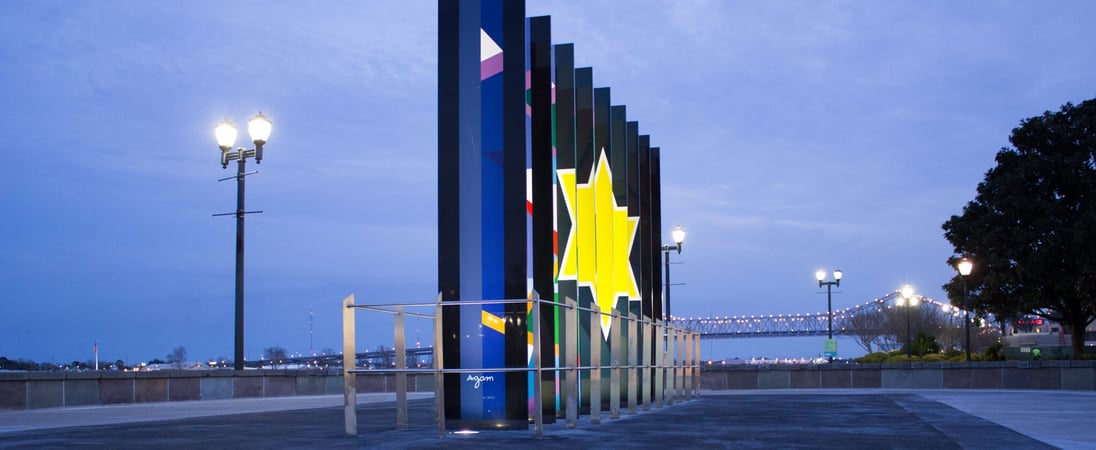
International Holocaust Remembrance Day
By learning about the Holocaust, we can honor the victims and survivors and work towards preventing such atrocities in the future.
Observed annually on January 27th to remember the victims of the Holocaust, in which the Nazi regime systematically murdered millions of Jews during World War II, International Holocaust Remembrance Day serves as a reminder never to forget the horrors of the past and to strive for a more just and peaceful world.
The day is also known as Holocaust Memorial Day.
How to Celebrate International Holocaust Remembrance Day
There are many ways to celebrate this day and to pay tribute to the victims of the Holocaust:
Attend a Local Ceremony or Event
Many communities hold ceremonies or events honoring the Holocaust victims on this day. You can attend one of these events to pay your respects and to learn more about the history of the Holocaust.
Educate Yourself and Others
The Holocaust is a complex and tragic event that is important to understand and remember. You can educate yourself and others by reading books, watching documentaries, and visiting Holocaust museums.
This can help you to learn more about what happened and to understand the importance of preventing such atrocities from happening again.
Take Action to Combat Hatred and Discrimination
The Holocaust was the result of hatred and discrimination that led to the persecution and murder of millions of people.
You can take action to combat these issues in your own community by speaking out against hate, and volunteering with organizations that work to promote tolerance and understanding.
Reflect and Remember
Finally, you can observe International Holocaust Remembrance Day by simply taking a moment to reflect on the tragedy of the Holocaust and to remember the victims. You can do this by lighting a candle, saying a prayer, or simply taking a moment to think about the impact of the Holocaust on the world.
Visit a Memorial
Take a virtual tour of a Holocaust museum or memorial. Many institutions offer online exhibits and virtual tours. These can be enlightening experiences that provide educational content and a deeper connection to history.
Social Media Tributes
Use social media to spread awareness. Post facts, stories, or reflections using hashtags like #HolocaustRemembranceDay or #HolocaustMemorialDay.
Engaging with a wider audience can amplify the message and promote collective remembrance.
History of International Holocaust Remembrance Day
The Holocaust was a genocide that took place during World War II in which millions of Jews, as well as other minority groups, were systematically tortured and killed by the Nazi regime in Europe.
Beginning in 1933 when Adolf Hitler came to power in Germany and implemented policies of racial purity and persecution of Jews and other minorities, the Holocaust reached its height in 1941 when the Nazis began the extermination of Jews in concentration camps across Europe, and ended in 1945 when Allied forces liberated the concentration camps and defeated the Nazi regime.
The Holocaust is remembered as one of the darkest periods in human history.
International Holocaust Remembrance Day was established by the United Nations in 2005 to mark the anniversary of the liberation of the Auschwitz-Birkenau concentration camp in 1945.
The day is held every January 27th to honor the victims of the Holocaust and to recognize the importance of remembering and learning from this tragic event.
The day is observed around the world with ceremonies, events, and educational programs to honor the victims and to raise awareness about the dangers of hatred, discrimination, and violence.
International Holocaust Remembrance Day Timeline
January 30, 1933
Hitler becomes chancellor
Adolf Hitler becomes chancellor of Germany, setting the stage for the implementation of policies of racial purity and persecution of Jews and other minority groups.[1]
September, 1939
Invasion of Poland
Nazi forces invade Poland, beginning World War II and leading to the occupation and persecution of Jews in Poland.[2]
June 22, 1941
Operation Barbarossa
Nazi forces launch Operation Barbarossa, invading the Soviet Union and leading to the mass murder of Jews in the occupied territories.[3]
January 27, 1945
Liberation of Auschwitz
Soviet forces liberate the Auschwitz concentration camp, revealing the horrific conditions and mass murder of Jews and other prisoners.[4]
November 1, 2005
International Holocaust Remembrance Day is founded
Following the 60th anniversary of the end of the Holocaust, the United Nations General Assembly Resolution 60/7 establishes January 27 as International Holocaust Remembrance Day.[5]
International Holocaust Remembrance Day FAQs
Why is Auschwitz-Birkenau’s liberation date, January 27, used for International Holocaust Remembrance Day?
January 27 marks the day Soviet troops liberated Auschwitz-Birkenau in 1945, revealing the atrocities within.
The Allies only discovered the extent of the Holocaust gradually; early reports received limited global attention due to the ongoing war and focus on the Yalta Conference.
Only later did the full horror of Auschwitz’s conditions reach international consciousness.
Are there other Holocaust remembrance days in addition to January 27?
Yes, many countries have memorial days linked to significant local Holocaust events.
Israel observes Yom HaShoah in April, aligning with the anniversary of the Warsaw Ghetto Uprising.
The UK and Germany also commemorate in January, while Argentina observes April 19, the anniversary of the Warsaw Ghetto Uprising.
How do Holocaust museums preserve and present artifacts?
Artifacts range from personal items like prayer shawls to mass-collected objects like eyeglasses.
At Auschwitz Museum, items like suitcases and shoes highlight individual lives lost.
Preservation is meticulous to maintain authenticity, with an emphasis on teaching and remembrance.
Did Holocaust memorials always focus on Jewish victims?
Early Soviet narratives generalized victims as “fascism victims,” omitting specific references to Jews.
In 1947, Poland’s Auschwitz Museum initially memorialized “Polish martyrdom” rather than focusing on Jewish genocide.
Recognition of the unique Jewish suffering became more pronounced globally after 1960.
Are there unique ways countries commemorate Holocaust Remembrance Day?
The Netherlands holds a silent “name reading” event in which the names of Holocaust victims are read for 24 hours.
In Argentina, cultural institutions host exhibitions and film screenings to educate and remind future generations of Holocaust impacts.
What are some myths or misconceptions about Holocaust remembrance?
One common myth is that liberation was an immediate relief for survivors.
Many were emaciated, and some died days after liberation despite receiving care.
The true scale of Auschwitz and other camps was also misunderstood initially; many thought the camps were purely prison camps, not death camps.
What role does art play in Holocaust remembrance events?
Art is central, with works like Elie Wiesel’s Night or memorial installations by artists.
Museums display art created by survivors, and annual commemorations often feature music, poetry, or survivor-written literature, preserving memories in moving accessible forms.
Did the UN always commemorate January 27 as Holocaust Remembrance Day?
The UN only officially marked January 27 in 2005. Before then, commemorative practices varied widely, often influenced by local historical connections to WWII or political factors.
The UN designation helped unify global efforts in Holocaust education and remembrance.
Why were most concentration camps destroyed while Auschwitz was preserved?
Many camps, including Treblinka, were entirely demolished by Nazis trying to erase evidence.
Auschwitz survived due to early preservation efforts by former prisoners who prevented its dismantling, eventually leading to the establishment of the museum in 1947.
How did Auschwitz survivors help shape Holocaust memorial practices?
Survivors advocated early for preserving Auschwitz, retrieving iconic items like the “Arbeit Macht Frei” sign.
They also pushed to establish memorials, initially focusing on educating about the Nazi regime and later emphasizing the unique Jewish experience during the Holocaust.
See what else is happening…
There’s always more going on every month at Days Of The Year. Here are our favorites this month!
Also on ...
View all holidaysThomas Crapper Day
Revolutionizing plumbing, an innovator's legacy transformed the way we handle necessities, leaving an enduring mark on sanitation.
National Chocolate Cake Day
Indulge in this delectable cocoa-based dessert, make the original pioneering recipe or put a modern twist on this classic by adding flavors like matcha.
National Bubble Wrap Day
It's that satisfying pop, the protection for fragile stuff, the stress-relief tool, all rolled into one — a true unsung hero of packaging!
National Geographic Day
Explore the world without leaving your couch! Stunning photos, captivating stories, and amazing discoveries await you in this iconic publication.




